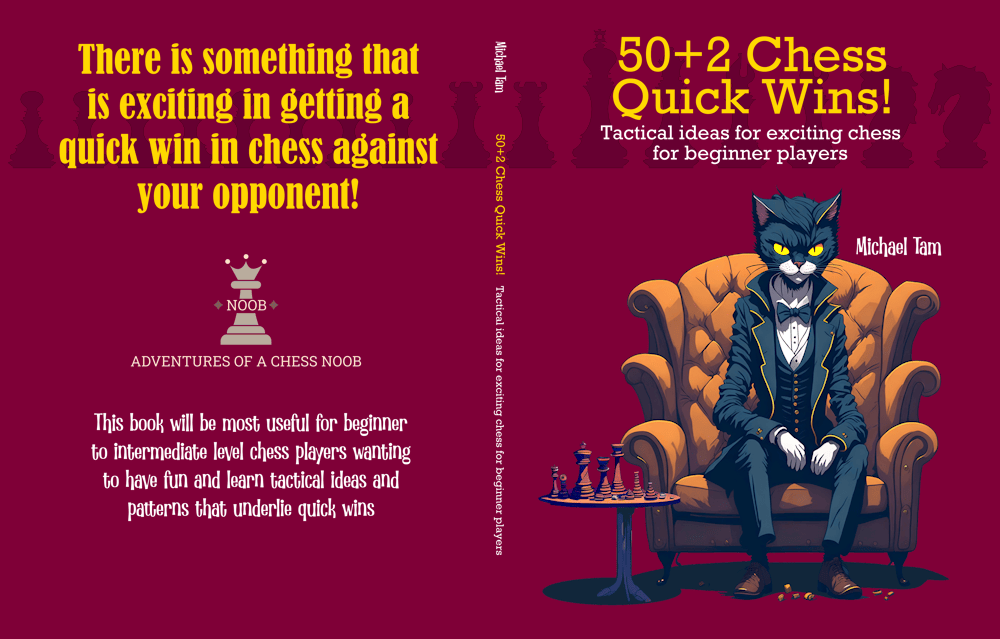
BRILLIANT QUEEN TRAP ❤️🔥 Steinitz vs Miller 1883 ♟️ Vienna Gambit History
#history #steinitz #vienna #viennagambit
Today, I played around with the chess.com analysis board and decided to have a look at the masters database that can be found on the opening's tab (see below). Specifically, I wondered any well-known masters have played the Vienna Gambit Accepted - one of my favourite lines in chess. I expected that this would likely be uncommon or even rare as the Vienna Gambit Accepted is known to be bad for Black - practically a mistake. It is very likely that at an advanced level, the player with the Black pieces would decline the Vienna Gambit by steering it into the Vienna Game: Main Line, which tricky but known to be advantageous for Black.

Interestingly, there were 36 games on the chess.com masters database and within the list, there was this absolutely gem of a game between Wilhelm Steinitz and Emlen Hare Miller from 1883.
A quick bit of history; Steinitz is someone who all chess lovers should know a little about! Wilhelm Steinitz was an Austrian-American chess master, and the first World Chess Champion from 1886-1894. At the time of this game in 1883, he would have been 47-years-old, and three years before he would become the World Chess Champion. He had taken a break from professional chess for almost a decade and had only in the recent returned to serious competition.

Steinitz moved to Vienna as a young man in the late-1850s to study mathematics at Vienna Polytechnic, where his chess also rapidly improved, becoming one of the strongest players in Vienna and Austria. He turned professional in the early 1860s. Steinitz was known for his aggressive "romantic" style of attacking chess, but in 1873, he unveiled and advocated for the new "positional" style, which he proposed was superior. This was difficult to argue against with his world leading performance.
However, after 1873 practically retired from competitive chess, focussed largely on his work as a chess journalist. Steinitz made a strong return to competition in the Vienna 1882 chess tournament and proved his detractors from the past decade wrong by taking equal first place.
From December 1882 to May 1883, Steinitz visited the United States, and during that visit, played many exhibitions and casual games, including this one against the 24-year-old Emlen Hare Miller from the Philadelphia Chess Club. Miller would later make as a career as a lawyer and represent the University of Pennsylvania team to play against the University of Oxford and Cambridge in the early 1900s.
It is very interesting to me that although Steinitz had been advocating for the positional style for a decade when this game was played, he chose to play a particularly daring and aggressive line in the Vienna Gambit, which Miller accepted (1. e4 e5 2. Nc3 Nf6 3. f4 exf4).
The interesting thing is that the Vienna Gambit wouldn't have been known by the name "Vienna Gambit" at the time. With much of the theory on what would be known as the Vienna Game/Gambit being developed in the mid-1800s by people like Carl Hamppe in Vienna, it is almost certain that Steinitz would have had a familiarity with it. He plays what is now known to be the immediate powerful move e-pawn advance in the Vienna Gambit Accepted (4. e5). Indeed, he is the ONLY pre-20th century master in the database who played White with in the Vienna Gambit Accepted who played this move. There is a game from Charles Henry Stanley (first chess champion of the USA), Joseph Blackburne (British chess master, one of the strongest chess players of his era, a contemporary of Steinitz, and had the amazing nickname, The Black Death"), and one also a game from Gioachino Greco (who preceded them all in developing romantic style in the 1600s). Stanley, Blackburne, and Greco don't capture the advantage with (4. e5) in their games and it is curious to me how different the world is now with computer-assisted analysis!
Back to the game, Steinitz and Miller thus move down what is the "normal" line in the Vienna Gambit Accepted. Miller correctly un-develops his knight (4... Ng8) against White's attacking e-pawn and Steinitz now flexes his aggressive style and superior knowledge of the Viennese "Hamppe's Game". The normal next move is (5. Nf3), developing the other knight and defending against Black's Qh4+. However, Steinitz baits Miller to bring out their queen and instead plays (5. d4), technically a mistake but it is super tactical and tricky to play!
Black of course plays (5... Qh4+), clearly the best move. Steinitz is well prepared and bongclouds his king (6. Ke2), the best move. And suddenly, Black's queen seems out of place! I can imagine the thoughts going through Miller's mind. It seems obvious that Black is better, but what is the next move?
The correct move is (6... d6), which opens Black's light square diagonal for their bishop, and immediately threatening to skewer White's king against his queen. This is not necessarily impossible to find, but it also isn't especially obvious, especially if one's focus is on "where to move the queen". Interestingly, Stockfish identifies that d6 is Black's ONLY move such that their advantage is maintained! The second-best move, extraordinarily enough, is for Black to un-develop their queen to d8, which returns the evaluation to [0.00]. I would argue that this is a difficult notion to contemplate - to develop and un-develop two pieces in 6 moves!
Miller, possibly influenced by his experience with the King's Gambit, plays (6... g5). This is a reasonable looking move, but we now know objectively with modern tools that is a mistake. Steinitz is not only psychological and tactically ahead, but objectively so in evaluation [-0.5 → +1.4]. Steinitz couldn't have been able to imagine the existence of chess computers in 1883, but I suspect he knew what he was doing and knew that he was winning by drawing Miller into a trap!
White now chases Black's queen with development and gaining tempo; (7. Nf3) and then the fantastic (8. g4)! Steinitz gambits another pawn, and Miller, avoids the error by capturing the g-pawn and pulls their queen back to a safer square (8... Qg6).
However, Steinitz like a puppet master, draws Miller's queen back! He throws yet another pawn forward, Black captures, White captures back with their rook, and then withdraws their rook when threatened by a bishop, hanging the g-pawn again (9. h4 gxh4 10. Rxh4 Be7 11. Rh2). Miller is unable to resist the lure and snaps up the g-pawn with their queen (11. Qxg4), and Stockfish grins at Black's mistake [+3.7]!
Steinitz's tactical idea? The pawn sacrifices allow him to win development and tempo - (12. Bh3) - he develops yet another piece with an attack on Black's offside queen. Miller, possibly suffering from a "sunk cost bias" attempts to keep their queen in the thick of the action with (12. Qg3), defending their f-pawn, rather than evacuating their queen.
However, with (13. Qh1), White seems to have lost the defence of their c-pawn and so Black withdraws their queen (13... Qg6), threatening to capture the hanging pawn, which would come with check! Steinitz is unafraid and does not defend the c-pawn. Perhaps the lesson to be learnt here is to be very wary of Steinitz offering free material!
Move 17, Steinitz moves their rook to the g-file and attacks Miller's queen on g6. With seemingly no good options, Miller captures the c-pawn with check (17. Rg1 Qxc2+). Steinitz now plays the ice cold (18. Ke1), and suddenly the trap is revealed, and all hope is lost! The queen is ensnared in an amazing net of White's coordinated pieces. Miller resigns, GG!
The big takeaway from this game is that even Steinitz, who literally created the modern approach to chess by developing and advocating the positional style, still played these romantic and unsound lines for fun.



